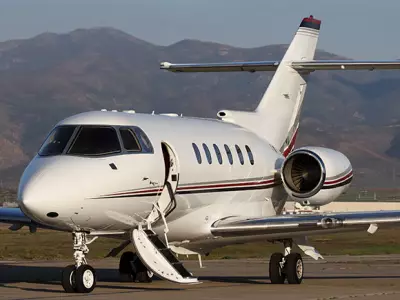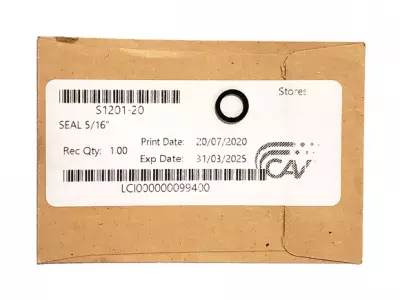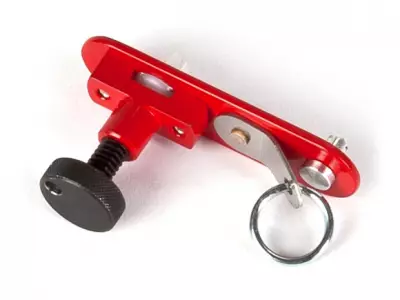Hawker 800A
In 1981, British Aerospace’s Chester, UK plant was a hive of activity, and Hawker Model HS125-700 sales were strong. The Company was also enjoying overall success across numerous platforms, including the BAe-146 Airliner and numerous Military projects. But they were doing anything but resting on their laurels. A new, larger and more advanced Hawker 125 airframe was in the works, and the roll out of the first proto-type BAe125-800 at Paris Air Show 1981 would absolutely steal the show.
With its latest grand achievement, BAe had designed and built a new Hawker 125 Business Jet from the ground up – one that would exceed the incredible success and proven reliability of models built in the previous twenty years, including then current production model HS125-700.
Model variants that would follow (800XP, 850XP, 900XP and 750), with the last 900XP rolling off the production line thirty-one years after the debut of the 800 Series proto-type, all stood on the shoulders of the BAe125-800 platform, arguably one of the greatest designs (or re-designs) in business aviation history.
The most obvious upgrade over the HS125-700 Series to the 800, at first glance, was the newly designed curved windscreens, which offered a huge jump in aerodynamics and operating efficiency, not to mention a sleek appearance.
Looking more closely, many more enhancements would be found throughout the design and build of the new Hawker 800, including a totally new glass cockpit (Honeywell or Collins), re-designed tail section including an enlarged rear fuselage fairing, wingspan increase from forty-seven feet to fifty-one feet, and an added 82-Gallon Ventral Fuel Tank. The roomy, stand-up cabin offers a forward galley, rear lavatory, and room for two crew members and eight passengers.
Newly modified TFE731-5 Engines offered an initial increase from the HS125-700’s 3,700 lbs thrust TFE731-3’s to 4,300 lbs, with later modifications to TFE731-5R-1H and TFE731-5BR-1H increasing thrust further to 4,500 lb. TBO (time between overhauls) increased from 4,200 hours to 5,000 hours with the upgraded “-5’s.”
Heavier Landing Gear, Braking System, and flight control components were required in order to support the slightly larger (and heavier) 800 Series.
Notes of Interest
The BAe125-800 is certified to take off from, and land on (firm) grass or gravel runways.
Throughout its production cycle, the 800 was the most popular mid-sized business jet in existence worldwide. British Aerospace once ran a two-page ad in Business and Commercial Aviation picturing two Hawker 800’s, with a tag line stating, “The best sixteen-passenger business jet…is two BAe 800’s.” Already dominating the mid-size market, this was a clever swipe at the larger Biz-jet market. In fact, many Corporate Flight departments in the U.S. did own and operate two or more Hawkers, giving them the flexibility to deploy management teams, engineers, and other personnel safely from coast to coast, and everywhere in between, in a very short time frame!
On August 6, 1988, a Hawker 800 carrying the President of Botswana and eight other passengers was mistakenly intercepted and struck by a missile fired from a Cuban Mig-23 Fighter over Angola. The first strike blew the Starboard engine completely off of the airplane, and the 2nd strike hit the same engine after separation. The skilled crew made a successful emergency landing and there were no injuries to the crew or passengers. Instead of burying the incident, British Aerospace instead highlighted it as testimonial to the amazing, tank-like strength of the Hawker 800 airframe. Pictures of the damaged plane were displayed often at the annual Hawker Operator’s Conferences. Well played, BAe!

| Manufacturer | British Aerospace |
|---|---|
| Years Built | 1983 to 1995 |
| Serial Number Range | 258001 to 258276 |
| Units Manufactured | 278 |
| Units in Operation as of 01/01/2022 | 213 |
| Length | 51.1 ft; Height: 17.6 ft; Wing Span: 51.4 ft |
| Capacity | 2 Crew; 8 Passengers |
| Ramp weight with full fuel | 27,520 lbs |
| Max Take-off Weight | 27,400 lbs |
| Average Cruise Speed | 429 Knots |
| Ceiling | 41,000 feet |
| Climb Rate | 3,500 feet per minute |
| Range | 2,570 NM with seats full |
| Engines | Two Honeywell TFE731-5BR-1H |
| TBO | 5,000 hours (with upgrade) |
| Thrust | 4,500 lbs |




